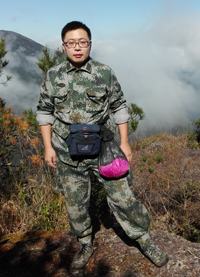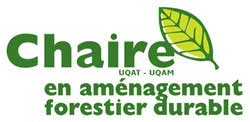Geofroy Zanin, Karelle Rheault, Annie DesRochers, Xiangbo Yin, Armand Séguin, Christine Martineau. The Poplar Microbiome 2024. In The Poplar Genome. (Porth, I., Klapste, J. and McKown, A., Eds.) Cham, Springer International Publishing. 107-123
In recent years, plant–microorganism interactions and their impact on plant growth and health, and in turn on plant-driven ecosystem services (e.g., carbon storage, phytoremediation) have gained a lot of interest in the scientific community. This interest has been stimulated by the development of high-throughput sequencing technologies that greatly improved the capacity of scientists to efficiently characterize microbiomes, which are defined as the pool of genomes of the microorganisms (e.g., bacteria, fungi) present in a particular habitat. Among trees, the poplar microbiome is one of the most extensively studied. The goal of this chapter is to summarize the current literature on the poplar microbiome, first by describing the microbiomes of belowground and aboveground parts of poplars, and second by highlighting links between poplar genetic and the microbiome. This second part includes a review of studies specifically addressing the impact of transgenesis on the poplar microbiome. Overall, this chapter highlights the diversity of the poplar microbiome and the importance of further assessing links between tree genetic and the microbiome.
Lei Gao, David Paré, Christine Martineau, Xiangbo Yin, Juanita Carolina Rodríguez-Rodríguez, Patrick Gagné, Yves Bergeron. Response of the soil microbial communities to forest ground cover manipulation in a boreal forest 2024. For. Ecol. Manage. 121615
DOI : 10.1016/j.foreco.2023.121615
In eastern Canada, boreal forests are locally experiencing a shift between two alternative stable states, productive closed-canopy feather moss (Pleurozium schreberi (Brid.) Mitt.) forests to low-productivity open lichen (Cladonia spp.) woodlands. While this shift has important consequences for ecosystem structure and productivity, little is known about the changes occurring in the diversity and composition of the soil microbial community which may be driven by this process. We evaluated the effects of 10-year moss transplantation on soil microbial communities in an open-lichen woodland. Treatments included: 1) removal of the lichen cover, 2) removal of the lichen cover followed by transplantation of a feather moss cover, 3) a control with the lichen cover kept in place (lichen control), and 4) a natural forest site with a feather moss cover (moss control). We found that changing the forest ground cover has a significant impact on the diversity, composition and function of soil microbial communities. Fungal alpha diversity was more sensitive to changes in lichen and moss cover, compared to bacterial diversity. Soil microbial community composition showed significant differences among all forest ground covers, but with greater similarities between the moss transplantation and control moss treatments. More importantly, changes of forest ground cover significantly affected the structure of microbial communities and fungal functional groups. Moss transplantation significantly increased the relative abundance of the organic nitrogen-scavenging fungal genus, Piloderma. Furthermore, moss transplantation significantly increased the overall relative abundance of ectomycorrhizal fungi and decreased the proportion of ericoid mycorrhizal fungi. Soil moisture and temperature were the main environmental variables associated to the shift in microbial community composition. Our study points out that moss transplantation in open-canopy lichen woodlands contributes to regulate and modify the composition, structure, and function of the soil microbial communities with potential implications for explaining the changes in ecosystem processes associated with these two forest ecosystems.
Xiangbo Yin, Christine Martineau, Nicole J. Fenton. Synergistic effects in mine offsite landscapes: Predicted ecosystem shifts could exacerbate mining effects on bryophyte community structure. 2022. Ecological Indicator 144:109555
DOI : 10.1016/j.ecolind.2022.109555
Global change is shifting ecosystem type relative abundance in boreal forests, while the green energy transition results in increased mining activities around the globe. The interaction and consequent effects of these two trends on biodiversity have not been examined in depth. Bryophytes species can be used as indicators to measure these effects because they play key ecological roles in boreal forests. We identified and evaluated the interaction between ecosystem type (i.e., coniferous, deciduous, mixed forest and open canopy) and mining on microhabitat scale bryophyte diversity and composition in 1-km landscapes surrounding six mine sites at different stages of the mining lifecycle in the Canadian boreal forest. Irrespective of microhabitat type, the combined effects of ecosystem type and mining stage were interactive on bryophytes. Bryophyte richness and community composition were negatively affected by offsite effects of mines in only deciduous and mixed forests. The interacted effects on bryophyte richness mainly occurred on the ground r microhabitats. We also found that deciduous, mixed forests (coniferous forest as a reference) and mines had a negative impact on the abundance of feather mosses and sphagna. Furthermore, indicator species were identified for areas affected by mines (Pohlia nutans and Dicranum polysetum) and for control areas (Sphagnum angustifolium and Plagiomnium cuspidatum). Our results suggest the predicted ecosystem shifts with global changes, from coniferous to deciduous forests, could potentially increase the effects of mining on forest ecosystem resistance through the changes in bryophyte community structure. Adding microhabitats (i.e., adding coarse woody debris) near mine sites is a potential strategy to maintain species richness. Collectively, these findings advance our understanding of how mining affects biodiversity and highlight the importance of considering mine offsite landscapes in future environmental evaluations of development projects in the context of global changes.
Xiangbo Yin. Déterminer les effets hors site des mines et leur empreinte en utilisant la végétation et la phyllosphère : intégration du type d'écosystème et du cycle de vie des mines. 2022. Thèse de doctorat en sciences de l'Environnement, Université du Québec en Abitibi-Témiscamingue. 338
Rémi Boisvert, Xiangbo Yin, Nicole J. Fenton. Offsite effects of mining on the frequency and abundance of five understorey plant species in western québec (Canada) 2021. Botany 99:449-455
DOI : 10.1139/cjb-2020-0158
Although the mining industry provides minerals and metals to the global market and represents important economic opportunities, it also constitutes a major anthropogenic disturbance in the ecosystems where it takes place. However, little is known about its offsite impacts on plant communities. We assessed the frequency and the abundance of five common boreal understorey plant species (Coptis trifolia (L.) Salisb., Cornus canadensis L., Linnaea borealis L., Lysimachia borealis (Raf.) U.Manns & Anderb., and Maianthemum canadense Desf.) at different distances around six mines in Abitibi-Témiscamingue and Nord-du-Québec (Québec). Frequency and (or) abundance of Coptis trifolia and M. canadense decreased near mines, suggesting that they might be sensitive to the loss of forest cover, particle deposition, and soil contamination induced by mining. Conversely, the frequency and abundance of Cornus canadensis increased near active mines, which indicates its resilience to the stress caused by mines and its ability to exploit the niche space left by more sensitive species. No effects on Linnaea borealis and Lysimachia borealis were observed. Our study suggests the possible presence of offsite impacts of mines on plant communities. Further studies considering enigmatic impacts should be conducted in order to develop our understanding of the broader environmental footprint of mining activity. © Canadian Science Publishing. All rights reserved.
voir la liste complète
Lei Gao, David Paré, Yves Bergeron, Christine Martineau, Raphaël Chavardes, Xiangbo Yin, Juanita Carolina Rodríguez-Rodríguez, Patrick Gagne. Les mécanismes de transition entre deux écosystèmes, les forêts ouvertes à lichen et les forêts fermées à mousse 26e colloque de la Chaire AFD. Hôtel Forestel, Val-d'Or, Québec. (2024-11-20)
Xiangbo Yin Déterminer les effets hors site des mines et leur empreinte en utilisant la végétation et la phyllosphère : intégration du type d'écosystème Soutenance thèse (2022-09-27)
Xiangbo Yin, Abdul Samad, Christine Martineau, Nicole J. Fenton. Out of sight, out of mind: changes in feather moss phyllosphere structure in mine offsite boreal landscapes Conférence annuelle de l’Association Botanique Canadienne. Université du Québec en Abitibi-Témiscamingue, Rouyn-Noranda, Québec. (2022-06-06)
Enrique Hernandez Rodriguez, Carlos Cerrejon Lozano, Xiangbo Yin, Marion Noualhaguet, Marc-Frédéric Indorf, Juan Carlos Villareal, Nicole J. Fenton. Defining rarity and commonness in bryophyte boreal species Conférence annuelle de l’Association Botanique Canadienne. Université du Québec en Abitibi-Témiscamingue, Rouyn-Noranda, Québec. (2022-06-06)
Xiangbo Yin, Nicole J. Fenton. Determining the footprint of mines on plant diversity: integrating enigmatic impacts and the mine life cycle. 3e colloque annuel de la Chaire industrielle CRSNG-UQAT sur la biodiversité en contexte minier. Université du Québec en Abitibi-Témiscamingue, Rouyn-Noranda, Québec. (2022-04-20)
Xiangbo Yin, Rémi Boisvert, Nicole J. Fenton, Christine Martineau. How big is the footprint? Quantifying offsite effects of mines on boreal plant communities 23e colloque de la Chaire AFD. Université du Québec en Abitibi-Témiscamingue (2021-12-07)
Xiangbo Yin, Rémi Boisvert, Christine Martineau, Nicole J. Fenton. The off-site impacts of mining on plant diversity in boreal areas 22e colloque de la Chaire AFD. Université du Québec en Abitibi-Témiscamingue, complètement virtuel (2020-12-02)
Xiangbo Yin What are the potential environmental risks associated with the development of REE production in Canada? Synthèse environnementale (2020-01-24)
Xiangbo Yin Déterminer l'empreinte spatiale des mines sur la diversité végétale : intégrations des impacts énigmatiques et du cycle de vie des mines projet thèse (2019-05-09)

